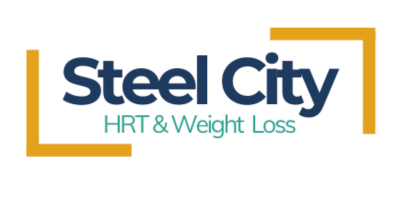
Your Doctor’s Obsessed With Numbers, But How You Feel Is What Truly Matters on TRT (Are YOU Being Underserved?)
Your Doctor’s Obsessed With Numbers, But How You Feel Is What Truly Matters on TRT (Are YOU Being Underserved?)
The Numbers Look Fine... But You Don’t
You finally went to the doctor. You shared how tired you feel. How your motivation has tanked. How your sex drive isn’t what it used to be, and you can’t lose the stubborn fat around your midsection.
They ran some labs.
And then came the verdict:
“You’re in the normal range.”
In other words: You’re fine. Go home.
Except you’re not fine.
This story is all too common for men in their 30s, 40s, and 50s. Labs say one thing. But your body tells another. And here’s the truth: Testosterone Replacement Therapy (TRT) is about way more than just chasing numbers. It’s about chasing you—the version of you that feels strong, focused, confident, and alive.
Let’s break down why being “in range” may be the most misleading phrase in men’s health—and what truly optimized hormone therapy looks like.
The Lab Trap—Why “Normal” Isn’t Always Optimal
Most labs define normal testosterone as anywhere between 250 to 1100 ng/dL. That’s a huge range.
Here’s the problem: that reference range includes both a 25-year-old athlete and a 75-year-old retiree with chronic illness. So if your testosterone comes back at 320, it’s technically "normal," but does that mean you’re thriving?
Absolutely not.
In a study published by Bhasin et al. (2018) in the New England Journal of Medicine, researchers found that men often didn’t experience symptom relief until testosterone levels approached or exceeded 500–600 ng/dL.
At Steel City HRT, we hear it all the time:
“I was in the 300s and felt awful. I got told nothing was wrong. But when I started TRT and hit the 700s, everything changed—energy, workouts, sex drive, sleep. All of it.”
“Normal” isn’t optimal. And for men who want to live, not just survive, optimization matters more than statistics.
Symptoms Speak Louder—Why Patient-Reported Outcomes Matter
Your body is smarter than a spreadsheet.
While lab values give us a snapshot, symptoms are the story. They tell us how hormones are actually functioning in your system, not just how they compare to a population average.
Common symptoms of low testosterone include:
Fatigue or lack of drive
Low libido or poor erections
Irritability or mood swings
Poor sleep
Loss of strength or stamina
Increased belly fat
Brain fog or lack of focus
If you're experiencing 3 or more of these, even with a “normal” lab result, it’s time to dig deeper.
At Steel City HRT, we use both data and dialogue. Your provider tracks your numbers, yes—but they also track your story. Because how you feel matters.
The Problem With One-and-Done Providers
Let’s be honest. Most traditional doctors are overwhelmed. The average primary care visit lasts just 13–15 minutes. That’s barely enough time to go over labs, much less your full symptom history.
Insurance-driven models tend to follow outdated guidelines, where TRT is only approved if your total testosterone falls below a certain threshold—usually below 300 ng/dL—and even then, treatment is often limited or inconsistent.
Here’s what happens next:
You’re under-treated or denied care entirely.
Your symptoms are blamed on aging or stress.
You’re offered an antidepressant or a sleep aid instead of hormone support.
This isn't healthcare. It's band-aid care.
Our clinic takes a different approach. With licensed hormone therapy specialists, longer appointment times, and unlimited telehealth messaging, you get a customized plan that evolves with your body.
It’s Not Just T—Why Hormone Balance and Lifestyle Matter Too
Here’s a secret the mainstream rarely talks about:
Testosterone doesn’t work in isolation.
If your estrogen is too high or too low, or if your thyroid, cortisol, or insulin levels are off, TRT alone might not fix everything. That’s why true optimization means treating the whole system.
At Steel City HRT, we evaluate and support:
Estrogen and SHBG (sex hormone-binding globulin)
Thyroid function
Cortisol and adrenal health
Metabolic function and body composition
We also integrate:
Medical weight loss programs (including GLP-1 injections like semaglutide)
Peptide therapy for recovery, sleep, and fat burning
According to Traish et al. (2011), men who underwent testosterone therapy combined with lifestyle changes saw significant improvements in insulin sensitivity, body composition, and overall vitality.
“I didn’t just want to raise my testosterone,” says Rob, 42. “I wanted to feel like an athlete again. TRT got me 80% there. Adding nutrition, GLP-1s, and peptides took it all the way.”
Real Results Come from Real Support (Not Just Scripts)
The biggest mistake we see? Men who start TRT through a low-cost clinic, get one generic dose, and never hear from their provider again.
TRT isn’t a set-it-and-forget-it therapy.
It requires:
Regular lab monitoring (every 8–12 weeks)
Dosage adjustments based on symptoms and labs
Side effect management (like hematocrit or estrogen balance)
Open communication with a dedicated provider
That’s why our clinic offers:
Telehealth check-ins
Unlimited messaging with licensed providers
Discreet, FDA-regulated prescriptions shipped to your door
Transparent pricing with no surprise fees
Your results aren’t determined by your first injection. They’re shaped by ongoing care.
“I started with another clinic, but I never heard back after the first month,” says Matt, 39. “At Steel City, I can text my provider anytime. We tweak things fast—and it’s made all the difference.”
FAQ
What is considered a “normal” testosterone level?
Most labs define normal total testosterone as 250–1100 ng/dL. However, symptoms of low T can occur even at levels considered "normal."
Can I have low T symptoms with normal labs?
Yes. Many men experience low energy, libido issues, and brain fog even when their labs fall within the reference range.
How often should labs be checked on TRT?
Labs should be monitored every 8–12 weeks initially, then quarterly. This includes total and free testosterone, estrogen, hematocrit, and more.
What other hormones affect testosterone therapy results?
Estrogen, thyroid hormones, cortisol, insulin, and SHBG all play a role in hormone balance and TRT effectiveness.
How long until I feel results from TRT?
Most men notice improvements in energy and libido within 3–6 weeks, with full results developing over 2–3 months.
Biased But Honest: The Real Danger Is Settling for “Good Enough”
Too many men are living at 60%—not because they’re lazy or broken, but because the system isn’t designed to help them optimize. Being “in range” might be good enough for a textbook, but it’s not good enough for real life.
You deserve to feel sharp, focused, driven, and alive. To look in the mirror and feel proud of who you see. To walk into the gym or the boardroom with confidence.
At Steel City HRT, we’re not here to manage symptoms. We’re here to transform lives.
Final Call-to-Action: Reclaim the Best Version of You
📞 Call us at 719-669-4223 or visit our website to schedule your personalized TRT consultation.
You don’t need another lab sheet that says you’re “fine.” You need a provider who listens. You need a plan that works.
💥 It’s time to stop settling for low energy and lost drive. Let’s rebuild your edge. Together.
References
Bhasin, S., Brito, J. P., Cunningham, G. R., Hayes, F. J., Hodis, H. N., Matsumoto, A. M., ... & Wu, F. C. (2018). Testosterone therapy in men with hypogonadism: An Endocrine Society clinical practice guideline. The Journal of Clinical Endocrinology & Metabolism, 103(5), 1715-1744. https://doi.org/10.1210/jc.2018-00229
Traish, A. M., Haider, A., Doros, G., & Saad, F. (2011). Long-term testosterone therapy in hypogonadal men ameliorates elements of the metabolic syndrome: An observational, long-term registry study. International Journal of Clinical Practice, 65(7), 687–695. https://doi.org/10.1111/j.1742-1241.2011.02727.x
Morgentaler, A., & Traish, A. M. (2009). Shifting the paradigm of testosterone and prostate cancer: The saturation model and the limits of androgen-dependent growth. European Urology, 55(2), 310–320. https://doi.org/10.1016/j.eururo.2008.09.024

